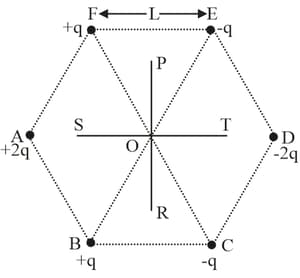Embibe Experts Solutions for Chapter: Electrostatics, Exercise 4: Exercise-4
Embibe Experts Physics Solutions for Exercise - Embibe Experts Solutions for Chapter: Electrostatics, Exercise 4: Exercise-4
Attempt the practice questions on Chapter 22: Electrostatics, Exercise 4: Exercise-4 with hints and solutions to strengthen your understanding. Alpha Question Bank for Medical: Physics solutions are prepared by Experienced Embibe Experts.
Questions from Embibe Experts Solutions for Chapter: Electrostatics, Exercise 4: Exercise-4 with Hints & Solutions
The variation of potential with distance r from a fixed point is shown in Figure, the electric force acting on a point charge of placed at the origin will be :
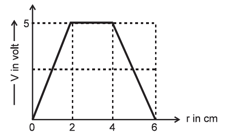
Figure shows two large cylindrical shells having uniform linear charge densities and . Radius of inner cylinder is and that of outer cylinder is A charged particle of mass charge revolves in a circle of radius Then, its speed is : (Neglect gravity and assumes the radii of both the cylinders to be very small in comparison to their length.)
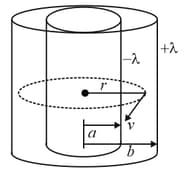
A point charge is brought from infinity (slowly so that heat developed in the shell is negligible) and is placed at the centre of a conducting neutral spherical shell of inner radius and outer radius then work done by the external agent is:
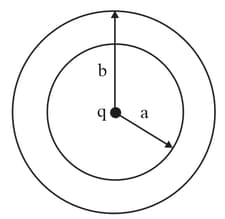
The magnitude of electric force on Charge placed at the centre Of two equilateral triangles each of side , as shown in figure is If charge are Respectively, then Is:
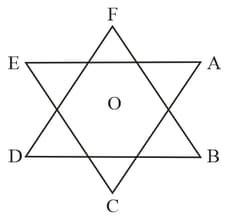
A tiny spherical oil drop carrying a net charge is balanced in still air with a vertical uniform electric field of strength When the field is switched off, the drop is observed to fall with terminal velocity Given the viscosity of the air is and the density of oil is the magnitude of is:
Identical charges are placed at each corner of a cube of side . Then the electrostatic potential energy of charge placed at the centre of the cube will be -
Three charges and are placed at the vertices of a right-angled isosceles triangle as shown. The net electrostatic energy of the configuration is zero if is equal to
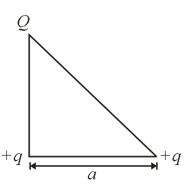
Six point charges are kept at the vertices of a regular hexagon of side L and centre as shown in the figure. Given that Which of the following statement(s) is (are) incorrect?
